Baseball, once known as an exclusively American pastime, has found an ardent following in Asia. Introduced to the region in the late 19th century by American expatriates, educators, and missionaries, the sport quickly took root. But baseball’s deep connection in Asia is not just about the game itself—it reflects the socio-cultural evolution of countries like Japan and South Korea.
I’ve had the privilege of attending both Korean and Japanese baseball games during my years of backpacking and living in Asia. I’m excited to share some of the similarities and differences that make these experiences unique!

The Ingrained Popularity of Baseball in Asia
Over the years, Japan and South Korea have woven baseball into the fabric of their national identities. The sport has become more than just a game—it has served as a symbol of unity, especially during moments of political change and social upheaval. Baseball has kindled nationalistic pride, with these countries frequently showcasing their prowess on the world stage. Whether dominating in the World Baseball Classic or the Olympic Games, both Japan and South Korea have proven themselves as forces to be reckoned with in international baseball. Their success has not only amplified the sport’s popularity at home but also solidified Asia’s growing influence on the global baseball scene.
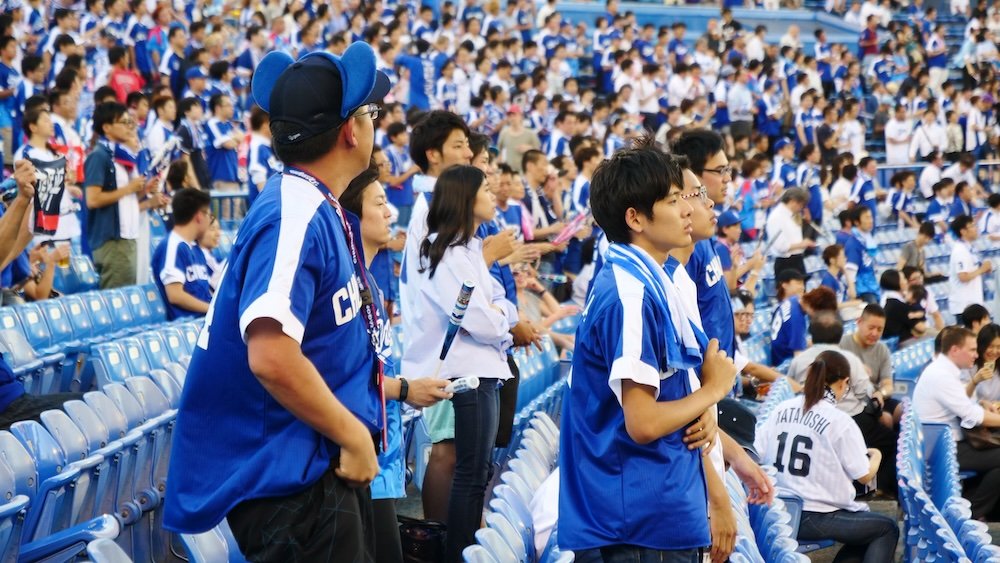
Nippon Professional Baseball and Korea Baseball Organization
The heart of this baseball revolution in Asia lies in the professional leagues: Japan’s Nippon Professional Baseball (NPB) and South Korea’s Korea Baseball Organization (KBO).
The Majesty of NPB
Founded in 1950, the NPB emerged from the ashes of the Japanese Baseball League and quickly became a cultural phenomenon in Japan. It’s not just the premier baseball league in the country; it represents a key part of Japanese society. The league is divided into two divisions, the Central League and the Pacific League, and features iconic teams like the Yomiuri Giants and Hiroshima Toyo Carp. These teams carry with them legacies and histories that stir deep emotions in their fans.
Attending an NPB game is more than just watching a sport—it’s an immersive cultural experience. The rhythmic fan chants, synchronized cheers, and packed stadiums create an atmosphere unlike any other. Beyond its borders, NPB has produced a wealth of talent, with many players going on to leave their mark in Major League Baseball (MLB), contributing to a growing East-West connection in the world of baseball.
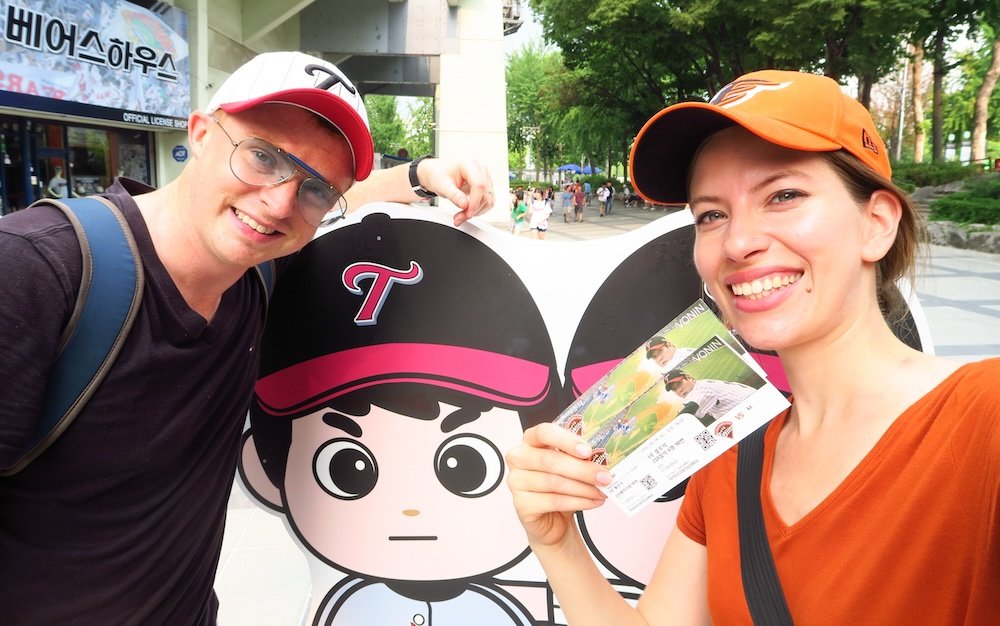
The Vibrance of KBO
A bit younger, but equally significant, the KBO was founded in 1982 and has since become a symbol of South Korea’s passionate relationship with baseball. Unlike the NPB’s two-division system, the KBO operates as a single league with teams like the Doosan Bears and the Samsung Lions. These teams are deeply woven into their respective regions, embodying the pride and spirit of their communities.
A KBO game is an explosion of emotion, with choreographed cheers, vibrant team colors, and a carnival-like atmosphere. The energy is palpable, with fans pouring their hearts into supporting their teams. The KBO has not only shaped South Korea’s national baseball identity but has also produced exceptional talent, many of whom have gone on to play in the MLB.
Interwoven Destinies
While the NPB and KBO have distinct histories and cultures, their stories are intertwined. Players often move between the leagues, sharing their talent and fostering a mutual respect between Japan and South Korea. As we dive deeper into the world of NPB and KBO, we’ll explore their similarities, celebrate their differences, and uncover how these two giants of Asian baseball have created a lasting legacy in the global arena. The story of baseball in Japan and South Korea is one of tradition, passion, and the universal love for the game.
source: Samuel and Audrey on YouTube
Historical Background
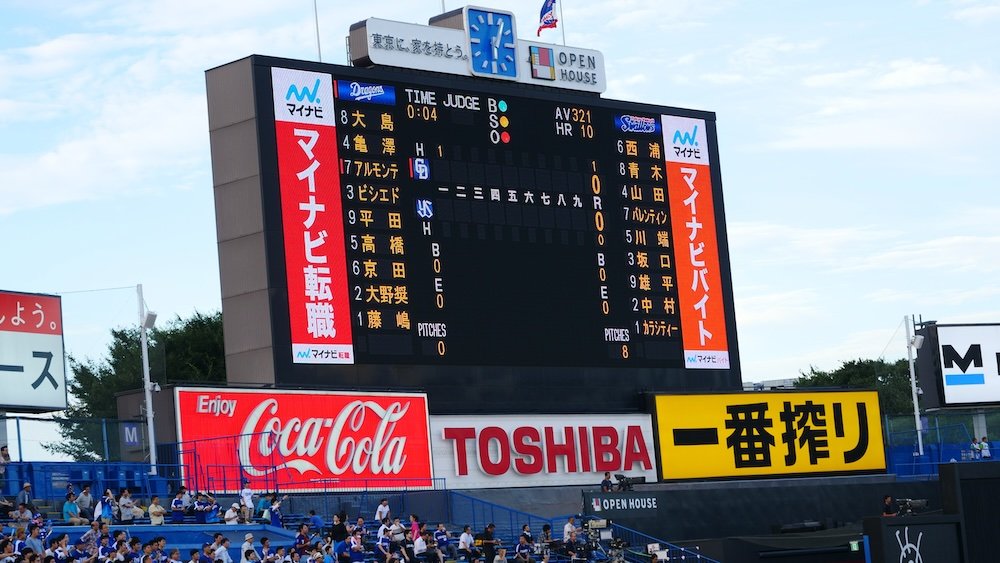
Japanese Baseball (NPB)
Origin and History:
Baseball in Japan, or “yakyū” as it’s locally called, traces its roots back to the Meiji Era. It was introduced in 1872 by Horace Wilson, an American English professor, who taught at what is now the University of Tokyo. Initially viewed as a novel Western sport, baseball gradually intertwined with the Japanese ethos, finding its firm footing by the early 20th century.
The earliest recorded baseball match in Japan took place in 1873 between teams of Tokyo University and the Yokohama Country & Athletic Club. By the 1920s and 1930s, baseball had become a national pastime, with high school baseball tournaments drawing significant attention. The fervor of these tournaments, particularly the National High School Baseball Championship held annually at Koshien Stadium, mirrored the nation’s budding love for the game.
Professional baseball emerged with the formation of the Japanese Baseball League (JBL) in the 1930s. However, the current structure, known as the Nippon Professional Baseball (NPB), was established in 1950, with the inception of the Central and Pacific Leagues.
Notable Milestones:
- Koshien Fever: The Koshien high school tournaments, both spring and summer, have become iconic. The fervor and passion surrounding these tournaments offer a glimpse into Japan’s deep-rooted love for baseball.
- Formation of NPB: The shift from JBL to NPB in 1950 marked the beginning of modern professional baseball in Japan, providing a more structured and competitive platform for teams and players.
- Japanese Players in MLB: Players like Hideo Nomo, Ichiro Suzuki, and Masahiro Tanaka transitioning to Major League Baseball highlighted the global caliber of NPB talent and paved the way for future players.
- World Baseball Classic: Japan’s victory in the inaugural World Baseball Classic in 2006, and again in 2009, underscored the country’s dominant position on the international stage.
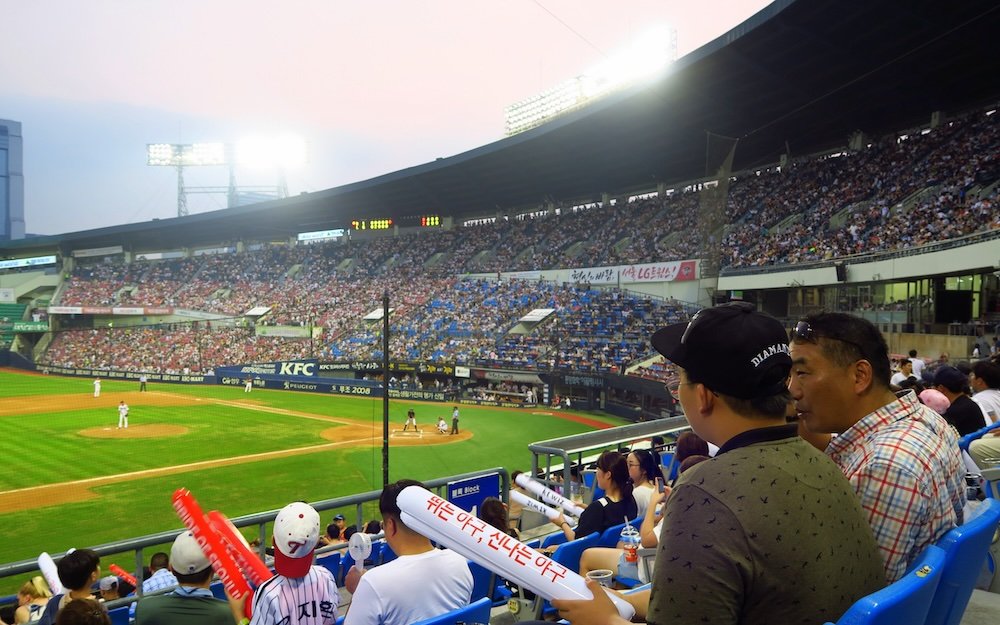
Korean Baseball (KBO)
Origin and History:
Korean baseball’s history might be relatively shorter compared to Japan, but its intensity and growth have been nothing short of remarkable. Baseball was introduced to Korea by American missionaries in the early 20th century. However, it wasn’t until after the Korean War that the sport began to see a surge in popularity, with the nation eager for symbols of unity and reconstruction.
During the 1970s and 1980s, the passion for baseball began to mirror the rapid modernization and economic development of the country. The formation of the Korea Baseball Organization (KBO) in 1982 marked the official beginning of professional baseball in South Korea, with six founding teams.
Significant Events in its Evolution:
- Inception of KBO: 1982 saw the official birth of professional baseball in Korea. It not only provided an organized platform for players but also catered to the country’s growing appetite for the sport.
- Rapid Expansion: Within a decade of its inception, the KBO expanded from six to eight teams, reflecting the sport’s rising popularity.
- Korean Players in MLB: Just like in Japan, Korean players started making a mark in MLB. Figures like Chan Ho Park, who became the first South Korean-born player in MLB in 1994, were trailblazers, showcasing the potential of Korean baseball.
- International Success: South Korea’s gold medal victory in the 2008 Beijing Olympics and their win in the 2015 Premier12 tournament firmly established the nation as a formidable force in international baseball.
- KBO’s Popularity Surge in 2020: Amidst the global pandemic, when most sports leagues were halted, KBO continued its 2020 season, earning a global fanbase as it was broadcasted internationally.
In both Japan and South Korea, baseball is more than just a game. It’s a reflection of societal evolution, a marker of historical milestones, and, most importantly, a unifying force that binds communities and generations.
source: Samuel and Audrey on YouTube
League Structure & Teams
Japanese Baseball (NPB)
Central League and Pacific League:
The Nippon Professional Baseball (NPB) divides its teams into two distinct leagues: the Central League and the Pacific League. Each of these leagues boasts a storied history, with rivalries and traditions that date back decades. While the Central League is known for maintaining more traditional baseball rules (for example, no designated hitter rule), the Pacific League adopts some modern aspects like the designated hitter rule.
Number of Teams and Notable Teams:
Central League:
- Number of Teams: Six
- Notable Teams:
- Yomiuri Giants (Tokyo): Often referred to as the “New York Yankees of Japan,” the Giants are the most successful and popular team in Japanese baseball history. Their legacy is filled with championship titles, legendary players, and a fan base that spans across the nation.
- Hanshin Tigers (Osaka): The Tigers are not just known for their on-field performances but also for their passionate and dedicated fan base. Their rivalry with the Yomiuri Giants, known as the “Japan Series,” is the stuff of legends.
- Hiroshima Toyo Carp: Symbolizing the resilient spirit of Hiroshima, the Carp has a devoted following. Their home, the Mazda Zoom-Zoom Stadium, is a testament to the city’s love for baseball and the team.
Pacific League:
- Number of Teams: Six
- Notable Teams:
- Fukuoka SoftBank Hawks: As one of the dominant forces in recent NPB history, the Hawks have clinched several Pacific League titles and Japan Series championships in the last decade.
- Chiba Lotte Marines (Chiba): With a rich history, the Marines have given baseball some memorable moments, especially their spirited performances in the Japan Series matchups.
- Tohoku Rakuten Golden Eagles (Sendai): Established more recently in 2005, the Golden Eagles quickly rose to prominence, winning their first Japan Series title in 2013.
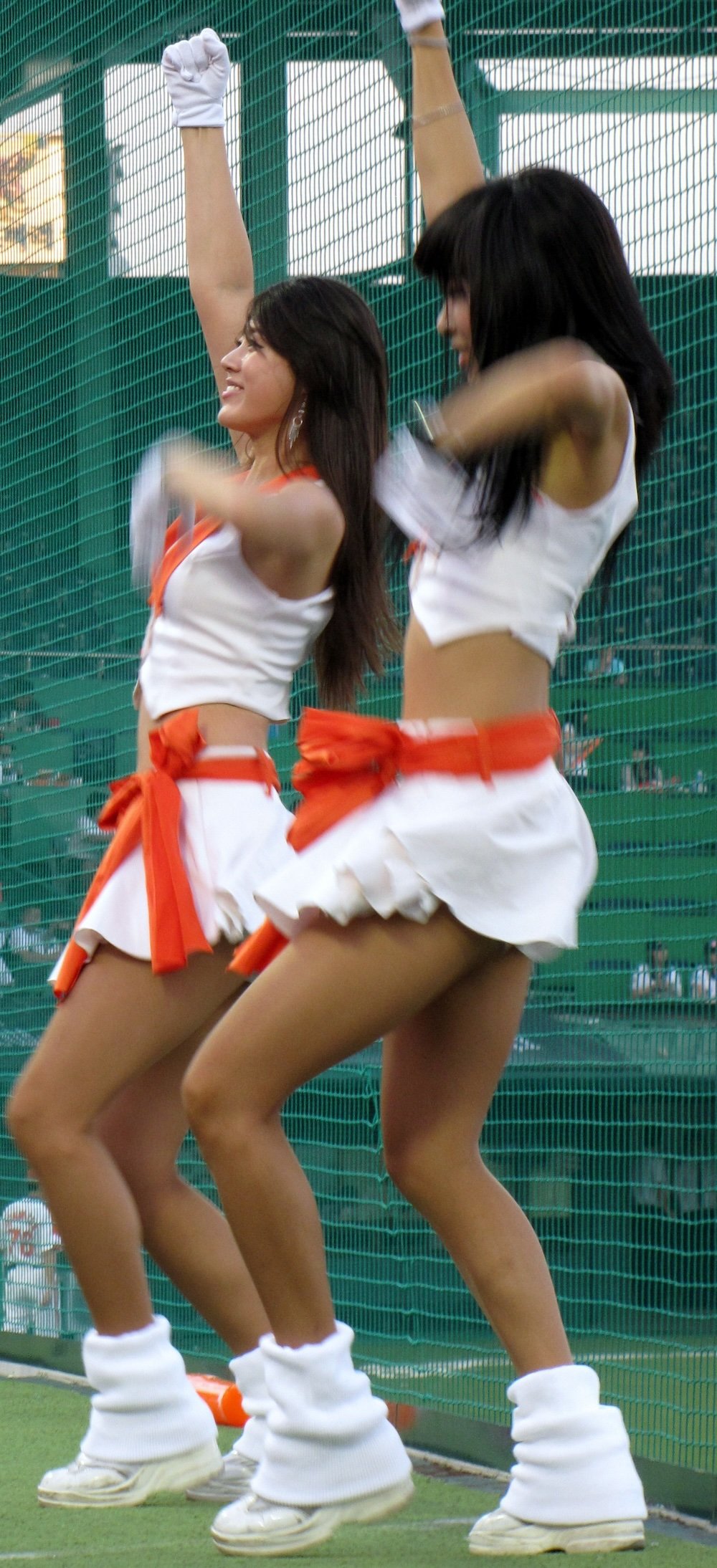
Korean Baseball (KBO)
Single League Structure:
Unlike the NPB, the Korea Baseball Organization (KBO) operates a single league system. This means all teams compete within one consolidated league, allowing for a balanced schedule and ensuring each team faces its rivals multiple times during the season.
Number of Teams and Leading Teams:
- Number of Teams: Ten
- Leading Teams:
- Doosan Bears (Seoul): One of the founding teams of the KBO, the Bears have a storied history filled with championship titles. They play their home games at the Jamsil Stadium, shared with their arch-rivals, the LG Twins.
- LG Twins (Seoul): Sharing the Jamsil Stadium with the Bears, the Twins have a passionate fan base. Their games, especially against the Bears, often lead to packed stadiums and electric atmospheres.
- Samsung Lions (Daegu): With multiple championship titles under their belt, the Lions are a powerhouse in the KBO. Their legacy is dotted with legendary players and memorable seasons.
- SK Wyverns (Incheon): The Wyverns have, in their relatively short history since 2000, made a significant impact on the KBO, winning several titles and consistently being among the top contenders.
Both the NPB and KBO, despite their structural differences, embody the passion and love for baseball in their respective countries. The teams represent not just cities or regions but carry with them histories, legacies, and the hopes and dreams of their ardent fans.
source: Samuel and Audrey on YouTube
Gameplay Differences
Rules and Regulations
While baseball’s core rules remain largely consistent worldwide, nuanced differences emerge when examining the Nippon Professional Baseball (NPB) and the Korea Baseball Organization (KBO).
- Designated Hitter (DH) Rule: One of the most prominent differences lies in the Designated Hitter rule. In the NPB, the Central League does not use the DH rule, meaning pitchers must bat. On the other hand, the Pacific League adopts the DH rule, allowing teams to substitute their pitchers with a dedicated hitter in the batting lineup. In contrast, the KBO universally applies the DH rule across all its teams, drawing its style more in line with the Pacific League of Japan and Major League Baseball.
- Tie Games: In the NPB, if a game remains tied after 12 innings (or 9 innings for certain games like doubleheaders), the match is declared a tie. The KBO previously had a similar rule, but changes in 2008 now allow for a game to extend up to 15 innings. If still tied after 15, the game is then declared a draw.
- Baseball Size: The baseball used in NPB is slightly smaller and often described as “tackier” than the ones used in MLB and KBO. This difference affects pitching grips and ball movement. The KBO’s baseball is closer in size and feel to MLB’s.
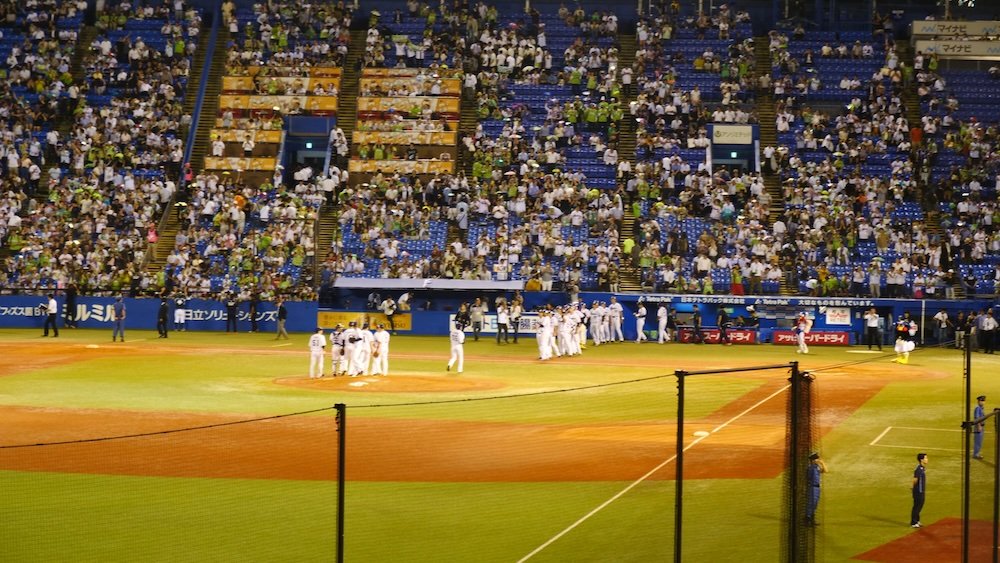
Playing Style
The way baseball is played in Japan and South Korea can be distinctive in approach, strategy, and execution.
Pitching Style:
- NPB: Japanese pitchers are often celebrated for their broad repertoire of pitches. From forkballs to shuuto (a kind of reverse slider), the emphasis is on deception and finesse. Many pitchers in NPB work on controlling the pace of the game, often taking more time between pitches compared to their KBO and MLB counterparts.
- KBO: Korean pitchers, while also having a variety of pitches, have historically leaned towards power pitching. The rise of players like Ryu Hyun-jin, known for his changeup and precise control, showcases the diversity of pitching styles emerging in the KBO.
Hitting Styles:
- NPB: Japanese hitters are generally taught to prioritize contact hitting over power. There’s a strong emphasis on fundamentals, with batters often going for well-placed hits rather than home runs. This approach stems from the traditional belief in “small ball” or manufacturing runs through bunts, steals, and sacrifices.
- KBO: The KBO has witnessed a power surge in recent years. While contact hitting is essential, many players are swinging for the fences, leading to higher home run counts. This shift is reminiscent of the power-hitting trend in MLB.
Strategy and Tactics:
- NPB: Given the focus on contact hitting and “small ball,” Japanese baseball often involves intricate strategies. Managers might call for squeeze plays, hit-and-runs, or sacrifice bunts more frequently. Defensive shifts and positioning are also vital, with players’ placements changing based on the batter’s known tendencies.
- KBO: Korean baseball is a mix of power and strategy. While there’s an evident inclination towards power hitting, the tactical aspect isn’t overlooked. The KBO has seen increased data analytics usage in recent years, leading to more informed decisions on player positioning, pitching matchups, and in-game strategies.
In essence, while the heart of baseball remains consistent between the NPB and KBO, the rhythm, nuances, and strategies offer aficionados a delightful variance in gameplay and approach. This diversity adds richness to the tapestry of international baseball, ensuring that fans always have something unique to look forward to in each league.
source: Samuel and Audrey on YouTube
Player Development and Scouting
The development and scouting of players are essential aspects of any professional baseball league. It not only ensures the influx of new talent but also maintains the competitive spirit and quality of gameplay. Both the NPB and KBO have distinct methods and processes in these domains.
Japanese Baseball (NPB)
Farm Systems and Academies:
- Ikusei Players: NPB teams have an “ikusei” or development system where they can sign players beyond the usual draft system. These players practice and play with the team’s second squad and can be promoted to the main team if their performance merits it.
- Two-Team System: Most NPB teams operate a two-team system: the main team and the farm team. The farm team functions as a feeder system and training ground for younger players. It ensures they get consistent playing time and experience, allowing them to develop their skills in real-game situations.
- Academies: Some NPB teams run their academies, especially for younger talents, where they groom potential future stars from a young age. These academies often focus on fundamentals and holistic player development, both in terms of baseball skills and personal growth.
Local and International Scouting:
- High School and University Baseball: Japanese high school baseball, especially the Koshien tournament, is a significant scouting ground for NPB teams. The performance of players in these high-pressure games is often indicative of their potential at the professional level. Similarly, university baseball leagues provide another fertile ground for scouting.
- International Scouting: With the globalization of baseball, NPB teams have also looked abroad for talent. Latin America, particularly the Dominican Republic and Venezuela, has been a popular scouting destination. Players from these regions often bring a different playing style, adding diversity and flair to the league.
Korean Baseball (KBO)
Training Schools and Talent Development:
- Baseball Academies: The KBO has seen a surge in private baseball academies over the years. These institutions play a pivotal role in identifying and nurturing young talent. They focus on rigorous training regimes, ensuring players receive comprehensive instruction.
- High School and University Feeder System: Much like Japan, high school and university baseball competitions are crucial for scouting in Korea. Standout players often find themselves on the radar of KBO teams, ready to make the leap to professional baseball.
- Mandatory Military Service and Sangmu: All able-bodied South Korean males are required to complete around two years of military service. The KBO and military have a unique arrangement where players can still play baseball during their service, representing the military’s team, Sangmu. This ensures that players don’t lose crucial development years.
Recruitment of Foreign Players:
- Foreign Player Quota: KBO teams are allowed a limited number of foreign players (typically three as of my last update in 2021). These players, often from the MLB or its minor leagues, bring a wealth of experience and elevate the overall quality of gameplay.
- Scouting Abroad: To fill these foreign player slots, KBO teams often have scouts or liaisons in the U.S. and other baseball-rich regions. They monitor potential recruits, especially those who might not be in the MLB starting rosters but can significantly impact the KBO.
- Player Adaptation: Once foreign players are recruited, KBO teams invest in helping them adapt to South Korean culture and the KBO’s playing style. This ensures smoother transitions and better on-field performances.
The player development and scouting systems in both NPB and KBO reflect the leagues’ ambitions and the countries’ love for baseball. They showcase the depth of commitment to nurturing homegrown talents and enhancing league competitiveness by tapping into global talent pools. The structured pathways provide aspiring players with clear routes to professional stardom, ensuring the future of baseball remains bright in both nations.
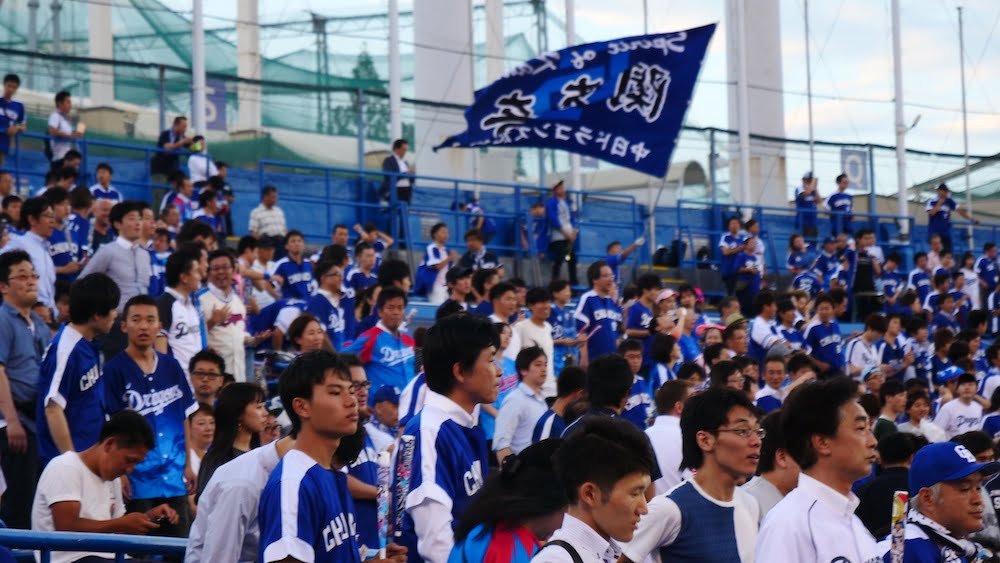
Fan Culture and Engagement
In the realm of sports, especially baseball, the fervor and dedication of fans often become as integral to the game as the players themselves. The stands aren’t just places to watch the game but an arena where a unique cultural display of support and loyalty takes place. The NPB and KBO, being two of the premier baseball leagues in Asia, have cultivated distinctive fan cultures that add layers of richness to the overall baseball experience.
Japanese Baseball (NPB)
Cheerleading Squads and Songs:
- Oendan (Cheer Squads): Traditional Japanese baseball games are incomplete without the presence of “Oendan” or cheer squads. These organized groups have designated sections in the stands and lead synchronized chants, songs, and dances. Each player often has a personalized chant, amplifying the connection between players and fans.
- Team Songs: Every NPB team has its anthem or song, belted out with pride by fans during games, especially after a score. These songs embody the spirit and identity of the team and become anthems that fans young and old cherish.
- Drums and Instruments: The rhythmic beat of drums, trumpets, and other instruments is a common feature. It provides a unique soundscape, making NPB games musically vibrant and creating an electrifying atmosphere.
Fandoms and Rivalries:
- Passionate Fandoms: Teams like the Yomiuri Giants or Hanshin Tigers boast fan bases that rival the most dedicated fans globally. The loyalty and passion are evident, from wearing team colors to traveling across the country for away games.
- Historic Rivalries: Matches between arch-rivals, like the Yomiuri Giants and Hanshin Tigers, transform the stadium into a cauldron of emotions. The intensity on the field is matched, if not surpassed, by the fans in the stands, making these encounters unforgettable spectacles.
- Unique Celebrations: Certain teams have post-game rituals involving fans. For instance, after a home win, Hanshin Tigers fans release balloons into the sky, creating a sea of team colors above the stadium.
Korean Baseball (KBO)
Unique Cheering Cultures:
- Chant Leaders: In the KBO, specific individuals or groups lead the crowd in synchronized chants. Armed with microphones and standing atop platforms, they orchestrate an ensemble of fans, ensuring everyone’s energy is directed cohesively.
- Dance Routines: Beyond just chants, KBO fans often engage in elaborate dance routines, especially after home runs or significant plays. These routines, often set to popular K-Pop tracks, add a festive atmosphere to games.
- Thundersticks: A staple in KBO games, these inflatable sticks are banged together to create noise, especially when the home team is batting. They not only amplify the stadium’s sound but also visually represent a sea of support.
Fan Loyalty and Team Support:
- Fan Events: KBO teams frequently host special events for fans, ranging from meet-and-greets with players to family days, ensuring fans feel closely connected to their teams.
- Team Merchandise: From jerseys to unique items like keychains, pillows, and more, fans often sport a wide array of team merchandise, showcasing their loyalty.
- End-of-game Rituals: It’s a common practice for teams to show gratitude to their fans at the end of games. Players may bow, give away items, or even perform little skits, fostering a deep bond between the team and its supporters.
Both the NPB and KBO offer more than just a baseball game. They deliver an immersive experience where fans are not mere spectators but active participants, amplifying the game’s excitement. This vibrant fan culture, steeped in tradition yet ever-evolving, ensures that attending a baseball game in Japan or South Korea is a memory to be cherished.

Economic Aspects
The economic facets of professional baseball leagues like the NPB and KBO have significant impacts on the sport, players, and fans. From revenue streams to player compensations, understanding these intricacies provides insights into how these leagues sustain themselves, compete globally, and continue to thrive.
Japanese Baseball (NPB)
Revenue Streams:
- Broadcasting Rights: With baseball’s immense popularity in Japan, television broadcasting rights become a primary source of revenue for the NPB. Major networks vie for exclusive rights to broadcast games, especially during the climax of the season and the Japan Series (NPB’s championship). With the advent of digital platforms, streaming rights have also grown in importance and value.
- Merchandise: The sale of team-related merchandise, including jerseys, caps, accessories, and a multitude of other memorabilia, generates substantial income. Given the fervent fan culture, items often become collector’s pieces, driving their demand and value.
- Ticket Sales: While this might seem obvious, ticket sales are pivotal. From regular season games to the highly sought-after playoff matches, stadium attendances regularly reach capacity. The pricing structure, offering varied rates for different seating sections and game importance, ensures a consistent inflow of funds.
Player Salaries:
- Top Earners: Star players in the NPB, especially those with international recognition or significant achievements, can command salaries that rival MLB players. While not on par with the highest MLB salaries, top NPB players can earn several million dollars annually.
- Average Salaries: The median salary in the NPB is notably less than that in the MLB but is still substantial, ensuring players lead comfortable lives and can focus solely on their game.
- Rookie Contracts: Fresh entrants into the NPB, especially those straight out of high school or university, generally start on modest contracts. Their earnings see a significant bump as they gain experience and showcase their skills on the field.
Korean Baseball (KBO)
Sources of Income:
- Corporate Sponsorship: The KBO, unlike many other leagues, sees its teams owned and named after major South Korean conglomerates like Samsung, LG, and Lotte. These corporate sponsorships provide a significant chunk of the teams’ revenue, ensuring financial stability.
- Television and Streaming Rights: Just like in the NPB, broadcasting rights in the KBO are lucrative. Local networks, and in recent years, international platforms, have shown interest in broadcasting KBO games, especially with the league’s rising global profile.
- Merchandise and Licensing: Fans’ passion for their teams ensures a steady income from merchandise sales. Moreover, licensing team logos and other intellectual properties for various products also generate revenue.
Compensation and Contracts:
- Foreign Player Salary Cap: The KBO imposes a salary cap on foreign players, aiming to maintain competitive balance within the league. As of the last update in 2021, this was set at a combined total of $1 million for the first year for each foreign player, though this can change based on league decisions.
- Domestic Player Salaries: While KBO player salaries traditionally lagged behind the NPB and MLB, the gap has been narrowing, especially for standout players. With the KBO’s growing reputation, players have seen improved contracts, with top players earning upwards of a million dollars annually.
- Incentive Structures: Many KBO contracts, especially for emerging talents, come with performance-based incentives. These provisions ensure players are motivated to perform at their best, with bonuses for achieving certain milestones.
The economic dynamics of the NPB and KBO highlight the intricate balance these leagues maintain between ensuring competitive gameplay, attracting top talents, and maintaining financial viability. The business side of baseball, while less visible to the average fan, is crucial in shaping the sport’s landscape in Japan and South Korea.
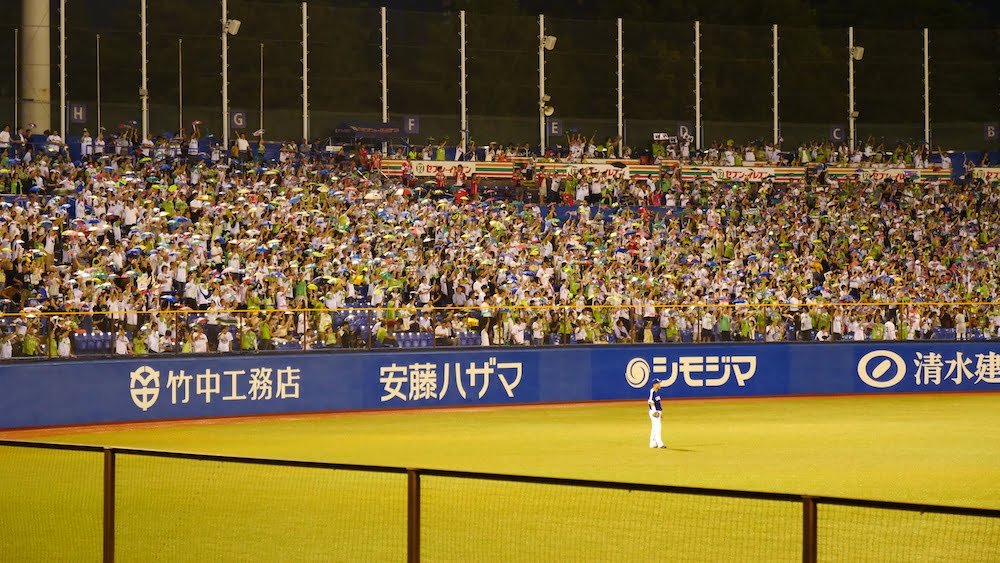
Influence and Exchange
The dynamic between the Nippon Professional Baseball (NPB) and the Korea Baseball Organization (KBO) is emblematic of the cultural and sporting exchanges between Japan and South Korea. Over the years, this interaction has grown beyond mere competition, fostering mutual respect, shared learning, and collaborative endeavors.
The Role of Players Moving Between NPB and KBO:
- Bridging Cultures: Players who have plied their trade in both leagues often serve as unofficial ambassadors. They help in bridging the cultural gap, dispelling misconceptions, and fostering a deeper understanding between the Japanese and Korean baseball communities.
- Sharing Expertise and Styles: As players move between the NPB and KBO, they carry with them distinct playing styles, strategies, and training methodologies. This exchange enriches both leagues. For instance, a pitcher from the NPB might introduce a unique pitching style to the KBO, while a KBO batter could bring a different approach to the plate in the NPB.
- Economic Impact: High-profile moves often garner significant media attention, resulting in spikes in ticket sales, merchandise revenue, and TV ratings. The anticipation of seeing how a star from one league performs in another can be a significant draw for fans.
- Enhancing Competitive Levels: The infusion of talent from one league to another invariably raises the competitive bar. Players with experience in the NPB can share their experiences with their KBO teammates, and vice-versa, leading to overall improvement in gameplay standards.
Examples of Collaboration Between the Two Leagues:
- Preseason Friendlies: Over the years, teams from the NPB and KBO have engaged in friendly matches, usually during the preseason. These games serve as an excellent opportunity for teams to test their mettle against foreign opposition and for fans to witness inter-league matchups that they wouldn’t usually see.
- Exchange Programs: There have been instances where coaches, umpires, and even administrative staff engage in exchange programs. Such initiatives allow for shared learning, with professionals from one league spending time in the other to understand and absorb different aspects of baseball management and training.
- Asia Series: While this tournament involved teams from across Asia, the NPB and KBO teams often played pivotal roles. The Asia Series was a competition where the champions from various Asian leagues, including the NPB and KBO, competed for continental supremacy. Though the tournament is no longer active, during its tenure, it showcased the talents of both leagues and fostered a competitive yet collaborative spirit.
- Joint Training Camps: Occasionally, teams from the NPB and KBO have held joint training camps, especially during the offseason. These camps are opportunities for players to train together, participate in scrimmages, and share expertise.
- Collaborative Initiatives: In areas like anti-doping, technology in sports, and player welfare, the NPB and KBO have sometimes collaborated on initiatives, sharing resources and knowledge to uplift the standards of baseball in both countries.
The NPB and KBO, though staunchly proud of their individual identities and heritage, recognize the benefits of collaboration and exchange. This synergy not only elevates the sport’s standards in both countries but also fosters a camaraderie that transcends national boundaries. The interplay between these two leagues serves as a testament to the unifying power of sports.
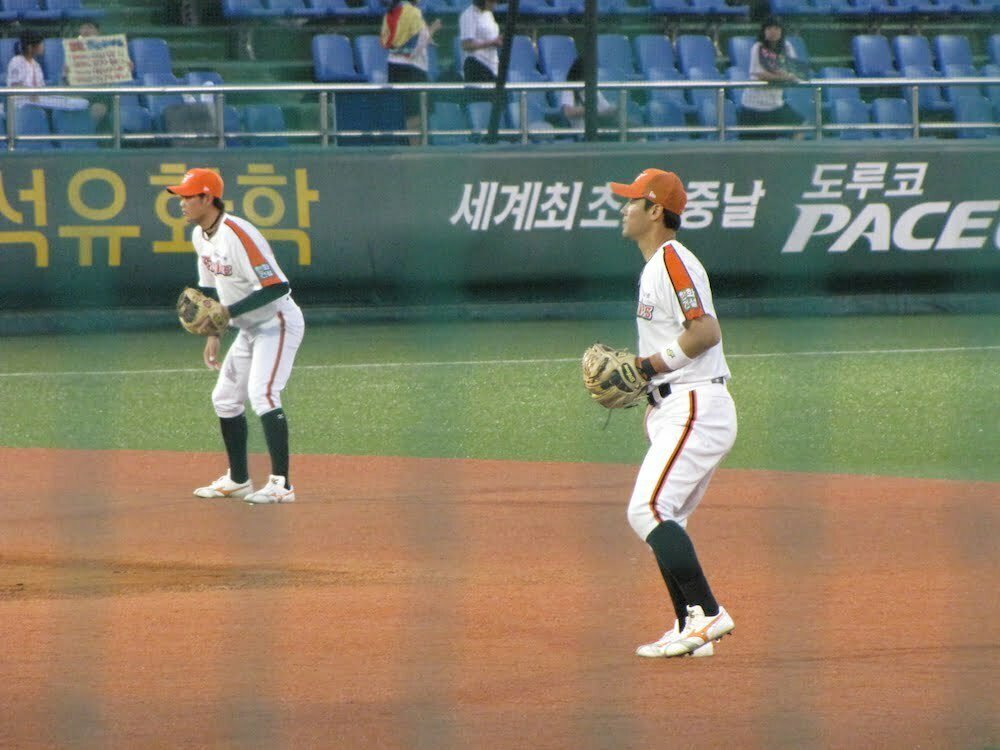
International Performance
Baseball, while being an intensely popular domestic sport in many countries, also boasts a rich history of international competition. Both Japan and South Korea have made significant contributions to the global baseball stage, marking their presence in key tournaments. The achievements of the Nippon Professional Baseball (NPB) and the Korea Baseball Organization (KBO) players at these global events underscore the prowess and potential of Asian baseball.
Japanese Baseball (NPB)
- World Baseball Classic (WBC): Japan has a storied history in the WBC, one of the premier international baseball tournaments.
- 2006 & 2009 Victories: Japan won the inaugural WBC in 2006 and successfully defended their title in 2009. These wins bolstered Japan’s image as a baseball powerhouse.
- Star Performers: Players like Ichiro Suzuki, Daisuke Matsuzaka, and Yu Darvish showcased their elite skills in the WBC, with Matsuzaka being named the Most Valuable Player in both 2006 and 2009.
- Consistent Contenders: Even when not winning, Japan has consistently put forth competitive teams, often reaching the final rounds of the tournament.
- Olympics: Baseball has been intermittently included in the Olympic Games, and Japan has consistently been a strong contender.
- Tokyo 2020: With baseball returning to the Olympics in Tokyo, Japan showcased a solid performance, indicating the depth of talent in the NPB.
- Historic Performances: While not always clinching gold, Japan’s Olympic baseball team, often comprising NPB players, has frequently been in medal contention.
- Other Tournaments: Japan regularly participates in other international competitions like the Asian Baseball Championship, often emerging as champions or finalists. Their consistent performance in these tournaments underlines the NPB’s strength and depth.
Korean Baseball (KBO)
- World Baseball Classic (WBC): South Korea’s performance in the WBC has been commendable, reflecting the KBO’s competitive nature.
- 2009 Finalists: South Korea reached the finals in 2009, narrowly losing to Japan. This runner-up finish showcased the nation’s baseball caliber on the global stage.
- Competitive Showings: In other editions of the WBC, South Korea has remained a team to watch, often progressing to the advanced stages of the tournament.
- Olympics:
- Gold in Beijing 2008: South Korea’s crowning achievement came in the 2008 Beijing Olympics when they won the gold medal in baseball. This victory was a testament to the talent present in the KBO and the country’s baseball infrastructure.
- Tokyo 2020: Alongside Japan, South Korea was also a key team in the Tokyo 2020 Olympics, further solidifying its position in the international baseball hierarchy.
- Asian Games & Championships: South Korea has been a dominant force in the Asian Baseball Championship and the baseball events of the Asian Games. Their regular successes in these tournaments underscore their regional supremacy and the strength of the KBO.
Both the NPB and KBO, through their respective national teams, have carved out impressive reputations on the international stage. Their performances in global tournaments not only uplift their domestic leagues but also contribute to the overall advancement of baseball in Asia. These achievements are testamentary to the passion, dedication, and skill of the players, coaches, and all involved in Japanese and Korean baseball.
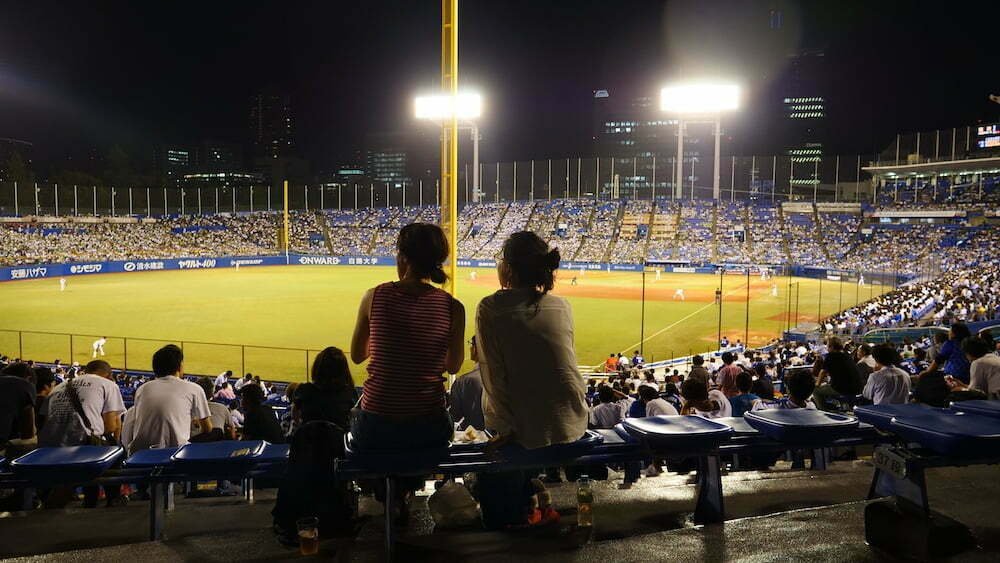
Challenges and Future Outlook
As with any professional sport, baseball in Japan and South Korea faces its set of challenges, even as both nations enjoy deep-rooted baseball traditions. These challenges offer opportunities for growth and evolution, allowing both the Nippon Professional Baseball (NPB) and the Korea Baseball Organization (KBO) to adapt, innovate, and solidify their positions on the global baseball map.
Japanese Baseball (NPB)
Current Challenges and Opportunities:
- Aging Fanbase: One of the concerns for the NPB is the aging demographic of its fans. While baseball remains popular, there’s a pressing need to appeal to younger audiences for sustained growth.
- Opportunity: Investing in digital platforms, modern marketing strategies, and interactive fan experiences can help capture the younger demographic.
- International Player Movement: The allure of Major League Baseball (MLB) has seen many top Japanese talents moving to the US. This exodus sometimes raises concerns about the domestic league’s competitiveness.
- Opportunity: By improving player contracts, enhancing the league’s global profile, and fostering stronger ties with MLB, the NPB can ensure that talent migration is mutual.
- Economic Disparities: Some teams with larger budgets have an advantage in player acquisition, which could lead to competitive imbalances.
- Opportunity: Implementing salary caps or revenue-sharing mechanisms can help in maintaining a balanced competition.
Prospects for Growth:
- International Expansion: The NPB can explore more collaborative tournaments with other leagues, enhancing its international profile.
- Technology Integration: Leveraging technology for player training, injury prevention, and fan engagement can elevate the NPB experience.
- Grassroots Development: Investing in youth baseball programs ensures a steady influx of homegrown talent, safeguarding the league’s future.
Korean Baseball (KBO)
Potential Pitfalls and Opportunities:
- Limited Global Recognition: Despite its high standard, the KBO often remains in the shadow of MLB and even NPB in terms of global recognition.
- Opportunity: Building on the recent international broadcasting of KBO games and forging partnerships with leagues in other countries can bolster the KBO’s global image.
- Stadium Infrastructure: While several KBO teams have modern stadiums, others play in aging facilities that might not offer the best fan experience.
- Opportunity: Modernizing these venues, possibly with retractable roofs for year-round use and better amenities, can significantly enhance fan engagement.
- Over-reliance on Corporate Sponsorship: KBO teams, being named after and funded by major corporations, sometimes face challenges in establishing a distinct identity.
- Opportunity: Encouraging community engagement, emphasizing city pride, and diversifying revenue streams can help teams build stronger individual identities.
Vision for the Future:
- Development of Homegrown Talent: Strengthening domestic training facilities and academies to cultivate local talent.
- Fan-centric Innovations: With KBO known for its vibrant fan culture, there’s potential to introduce augmented reality (AR) experiences, virtual reality (VR) stadium tours, and interactive game-day experiences.
- Eco-friendly Initiatives: As environmental concerns grow globally, the KBO can pioneer eco-friendly measures, from sustainable stadiums to environmentally conscious merchandise.
While both the NPB and KBO face challenges inherent to modern professional sports, they also stand on the cusp of numerous growth opportunities. By embracing change, innovating, and staying true to their rich baseball traditions, both leagues can ensure a vibrant and prosperous future. The potential trajectory for both is promising, with the possibility of greater international acclaim, deeper fan engagement, and a continually high standard of play.
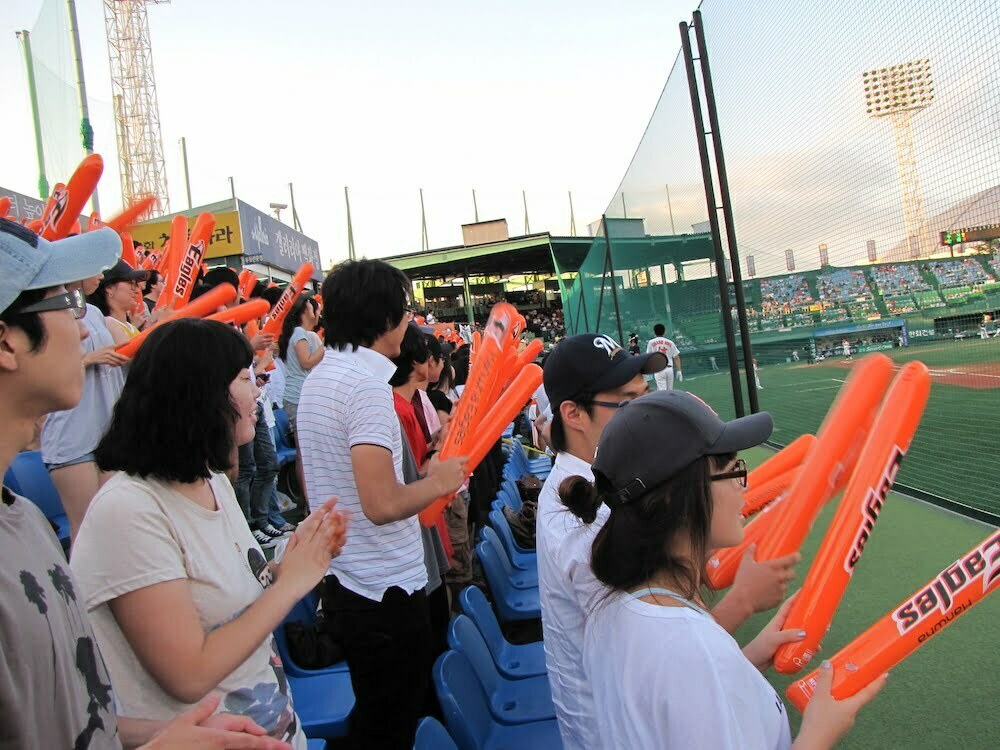
Planning A Baseball Trip To Japan And Korea
If you’re already the kind of person who cares enough to read a deep-dive comparison between Japanese and Korean baseball, you’re exactly the type who should plan a trip around it. Watching a game on TV is one thing. Walking up the stadium steps, hearing the first roar of the crowd, smelling grilled meat and spilled beer in the humid summer air? Completely different experience.
The nice thing is that NPB and KBO seasons overlap, so with a bit of planning you can build an itinerary that gives you both: the ritual and discipline of Japanese baseball, and the pure chaos and fun of Korean ballparks.
Best Time Of Year To Go
You don’t need to obsess over exact schedules to get this right. Think in simple windows.
Core Baseball Months
| Country | Typical Season Window | Sweet Spot For Travelers | What It Feels Like |
|---|---|---|---|
| Japan | Late Mar – Oct | Apr–Jun, Sep–early Oct | Mild temps, cherry blossoms or autumn leaves, packed stadiums |
| Korea | Late Mar – Oct | May–Jun, Sept | Warm evenings, lively outdoor life, big crowds for rivalry games |
If you want:
- Cooler temps + romance → April in Japan (cherry blossoms + baseball is hard to beat).
- Peak atmosphere → Mid-season weekends in both countries.
- Less crowd pressure → Weeknight games in May or June; still buzzing, easier to get tickets.
If you’re trying to combine both countries in one trip, something like late April–early May or late September works really well: you dodge the worst of the summer humidity and still catch plenty of games.
Choosing Your Baseball Base Cities
You don’t have to chase teams all over the map. Pick a couple of good “base cities” and let the stadiums come to you.
Japan: Where To Base Yourself For NPB
Tokyo: Easy Mode For First-Timers
If you just want maximum flexibility, Tokyo makes life simple.
- Multiple NPB teams reachable by local trains.
- Two very different atmospheres: a big modern dome vs an old-school open-air stadium.
- Endless pre- and post-game food options.
Staying somewhere on the JR Yamanote Line (Shinjuku, Shibuya, Tokyo Station, Ueno) gives you straightforward train access to most stadiums in the greater Tokyo area.
Kansai (Osaka / Kobe): Passion And History
In western Japan, Osaka and Kobe give you a different flavor:
- Osaka: Base for seeing the Hanshin Tigers and their famously intense fans.
- Kobe / nearby cities: Easy day trips, slightly slower pace than Tokyo.
- Perfect if you want to blend baseball with street food, neon, and day trips to Kyoto or Nara.
Other Useful NPB Cities
If you’re doing a longer Japan trip:
- Hiroshima – Compact city, emotionally heavy history, and a fiercely loved team.
- Fukuoka – Food paradise with a modern stadium and night-time yatai (food stalls).
- Sapporo – Great if you’re already heading north; baseball + Hokkaido nature.
You don’t need to hit them all. Two cities with two or three games total already gives you a strong feel for Japanese baseball culture.
South Korea: KBO Hotspots
Seoul: Maximum Variety, Minimal Effort
Seoul is the best starting point for KBO:
- Multiple teams based in or near the city.
- Easy subway access to stadiums.
- Tons of nightlife and food to wrap around your game days.
Pick an area on a subway line that reaches the stadiums easily (Gangnam, Jamsil, Jongno, Hongdae, etc.), and you’re set.
Busan: Baseball By The Sea
Baseball in a port city has a different energy:
- Sea breeze, beaches, and seafood before or after the game.
- Slightly more laid-back vibe than Seoul, but still extremely passionate fans.
Other KBO Cities
If you’re wandering deeper into Korea:
- Daegu – Proper “baseball town” energy.
- Incheon / Daejeon / Gwangju – More local feel, fewer tourists, just pure fan culture.
Getting Tickets And Picking The Right Seats
You don’t need a local friend to get tickets, but knowing where to look makes your life a whole lot easier.
Buying NPB Tickets As A Visitor
Realistically, you’ll use a mix of these:
- Official team websites – Increasingly foreigner-friendly, especially for big Tokyo teams.
- Ticket machines at convenience stores – Lawson, FamilyMart, and 7-Eleven often sell game tickets.
- Ticket agencies and resellers – Helpful if a game is close to sold out or you want specific seats.
Practical tips:
- Weeknights are easier to book than weekend rivalry games.
- Look for outfield cheering sections if you want the full drums-and-chants experience.
- For a calmer first game, choose infield seats along the first or third base line.
Buying KBO Tickets As A Visitor
KBO is a bit more casual but just as accessible:
- Official team apps and websites – Many allow simple online booking with a foreign card.
- On-site ticket windows – Often still an option, especially for weekday games.
- Local ticket portals – If you can navigate a bit of Korean (or use a translation plugin), you’ll find more choices.
In Korea, fans tend to book weekend games early, especially in big cities. For weekday games outside Seoul, walking up on the day is often still fine.
Where To Sit: Atmosphere vs Comfort
Here’s a simple decision table if you’re only catching one or two games:
| Priority | Japan – NPB Seat Choice | Korea – KBO Seat Choice | Why It Works |
|---|---|---|---|
| Maximum atmosphere | Outfield cheering section | “Cheer side” with drum leaders & cheer squad | Surrounded by songs, chants, and instruments. |
| Best overall view | Infield lower bowl, between home & 1st/3rd | Mid-level along 1st or 3rd base line | You can follow strategy, see pitch movement, and still feel the crowd. |
| Budget-friendly | Upper deck outfield | Upper deck or outfield bleachers | Cheaper, but you still get the noise and energy. |
| Family-friendly | Infield seats away from hardcore cheering | Sections farther from cheer platforms & speakers | Easier to talk, eat, and not overwhelm kids with volume. |
If you’re nervous about picking “wrong”, go for mid-level infield seats for your first game. Then, once you’ve felt the atmosphere, experiment with the rowdier sections.
Game Day Logistics: Getting There, Eating Well, Getting Home
Getting To The Stadium
In Japan:
- Trains and subways are your best friend.
- Stadiums are usually well-signed in English near the closest station.
- Aim to arrive at least 45–60 minutes before first pitch so you can find your seat, grab food, and soak it all in.
- Keep an eye on last train times if it’s a night game; extra innings plus a leisurely exit can sneak up on you.
In Korea:
- The subway network in big cities is excellent and easy to use.
- For stadiums a bit further out, local buses or a short taxi ride fill the gap.
- KBO games tend to feel more relaxed about late arrivals; people trickle in after work with armfuls of fried chicken and beer.
If your budget allows, an occasional taxi back to your accommodation after a night game can be a nice splurge, especially when everyone leaves at once.
What To Eat At The Ballpark
One of the best parts of doing this in Asia is that ballpark food is actually worth planning for.
Japan (NPB):
- Bento boxes with rice, fried chicken, pickles, and more.
- Yakitori skewers, curry rice, noodles, edamame.
- Beer vendors walking the aisles, pouring fresh draft beer straight into your cup.
- Many stadiums allow you to bring in snacks and drinks if you follow container rules.
Korea (KBO):
- Fried chicken and beer is almost a religion.
- Kimbap rolls, tteokbokki (spicy rice cakes), and other comfort foods.
- Lots of fans bring bags of food in from nearby takeout spots and convenience stores.
If you’re on a tighter budget, eat a proper meal near the stadium first, then treat the ballpark itself as “snack territory”.
Rough Game-Day Budget Comparison
Obviously this changes by city and team, but here’s a general traveler snapshot:
| Item | Japan – NPB (approx.) | Korea – KBO (approx.) |
|---|---|---|
| Mid-range ticket | ¥3,000–¥6,000 | ₩15,000–₩40,000 |
| Food + 1–2 drinks | ¥1,500–¥3,000 | ₩10,000–₩25,000 |
| Transport (round trip) | ¥200–¥800 | ₩2,000–₩5,000 |
You can go cheaper with upper-deck seats and convenience-store meals, or blow the budget on premium seats and merch. But you don’t need a huge bankroll to have a memorable night at either league.
Sample Itineraries: Turning Games Into Trips
3 Days In Tokyo With Baseball
Day 1 – Arrival + Neighborhood Wandering
- Check into your hotel in Shinjuku, Shibuya, or near Tokyo Station.
- Shake off jet lag with a gentle wander through local backstreets and an early bowl of ramen.
Day 2 – City Sights + Evening Game
- Explore a couple of classic sights (Asakusa, Ueno Park, or Shibuya Crossing).
- Late afternoon, head to the stadium: grab a bento, snap photos, watch the stands slowly fill.
- After the game, ride the train back with fans still humming team songs under their breath.
Day 3 – Second Stadium Or Day Trip
- If the schedule works, try a second game at a different stadium to compare atmospheres.
- Alternatively, take a day trip to somewhere like Yokohama or Nikko, still riding the high of the previous night’s chants.
3 Days In Seoul With Baseball
Day 1 – First Taste Of The City
- Check into a central area (Hongdae for nightlife, Jongno for tradition, Gangnam for polished city life).
- Feast on Korean BBQ for dinner; you’ll want some buffer before ballpark snacks.
Day 2 – Palace + Game Night
- Visit one of the palaces, wander through Insadong or Bukchon, and snack your way down a street market.
- Late afternoon: head to the stadium with the locals, grab fried chicken, and settle in for a loud, high-energy game.
- After the game, ride the subway with fans singing team chants, or walk to a nearby pojangmacha (street tent bar) for late-night snacks.
Day 3 – Cafés, Shopping, Or A Second Game
- Spend the day café-hopping, checking out K-Pop neighborhoods, or heading up a viewpoint for city views.
- If you’re hooked, squeeze in one more game before you leave—maybe at a different stadium to compare fan bases.
7-Day NPB + KBO Combo Trip
If you’re obsessed enough to do both in one go, here’s a simple structure:
- Days 1–3: Japan (Tokyo)
- One or two NPB games, plus city exploring and easy day trips.
- Day 4: Travel Day
- Fly Tokyo → Seoul, settle into your accommodation, and stroll a neighborhood market or riverfront.
- Days 5–7: Korea (Seoul)
- One or two KBO games, street food, palaces, and nighttime city views.
You leave with a clear, lived sense of how the two cultures express themselves in the same sport—something you simply can’t get through highlight reels.
Common Mistakes To Avoid
In Japan
- Cutting it too close with trains
Extra innings plus a slow exit can mean missing the last train. When in doubt, plan for a slightly earlier departure or be psychologically prepared to grab a taxi. - Underestimating the cheering volume
The cheering sections are incredible, but they are also relentless. If you’re sensitive to sound, bring earplugs or choose a quieter infield section your first time. - Not eating enough beforehand
Stadium food is good but often portioned more like snacks. Have a solid meal before the game and treat the ballpark food as your second dinner.
In Korea
- Assuming you can’t bring food in
Many KBO stadiums are very relaxed about you bringing your own chicken, snacks, and drinks in. Check the current rules, but don’t be shy about arriving loaded up like everyone else. - Ignoring the weather forecast
Early and late season games can still be cold; summer can be brutally humid. Layers, a light jacket, or a small fan can make the difference between “this is awesome” and “I’m suffering”. - Only doing one stadium
If you have time, try at least two different home parks. The vibe between Seoul and a more regional city is huge, and it really helps you understand how local baseball culture feels outside the capital.
Japanese vs Korean baseball travel: key questions, honest answers & on-the-ground tips
Is it worth planning an entire trip around baseball in Japan and Korea?
Absolutely. If you’re the kind of person who cares enough to compare NPB and KBO, building a trip around a few games is one of the most fun ways to experience both countries. You’re not just watching sport; you’re getting this concentrated blast of local culture, food, music, and crowd energy.
Beyond the stadium, baseball gives your itinerary a backbone: certain nights are “game nights”, and you wrap sightseeing, food, and day trips around them. It’s a really natural way to structure a Japan–Korea itinerary without over-planning every hour.
How many games should I see to really feel the difference between Japanese and Korean baseball?
Two in each country is the sweet spot. One game gives you a taste; the second game lets you notice the patterns, the rituals, and how different stadiums or fan bases feel.
If you’re tight on time, one NPB and one KBO game is still totally worth it. But if you can stretch to four games total—two in Japan and two in Korea—you’ll walk away with a much clearer sense of how the same sport can feel like two totally different subcultures.
When is the best time of year to watch baseball in Japan and South Korea?
It depends. Both leagues run roughly from late March into autumn, but not all months feel the same from a traveler’s perspective.
Spring (April–May) is ideal if you want cooler temperatures in Japan, cherry blossoms, and the sense that a new season is just starting. Early summer and early autumn are great for both countries if you like warm evenings and big, energized crowds without the most intense heat and humidity.
Mid-summer can still be fun, but be ready for serious humidity and the occasional rainout. If you’re combining both countries, late April–early May or late September is a really nice window.
Which is better for a first baseball trip, Japan or South Korea?
Honestly, there’s no wrong answer. Japan is great if you want ritual, history, and a slightly more “ordered” baseball experience: coordinated chants, decades-old rivalries, and stadium traditions that feel almost ceremonial.
Korea leans more into “party in the stands” energy—K-Pop style chants, dance routines, thundersticks, and an almost festival-like vibe. If you love chaotic fun and fried chicken and beer culture, KBO will feel like your natural home.
If it’s your very first time in Asia and you’re a bit nervous about logistics, Japan usually feels slightly easier to navigate in English. If you’re comfortable with subways and a bit of translation-app chaos, you can absolutely start in Korea too.
How far in advance should I buy NPB and KBO tickets as a visitor?
Generally, you don’t need to book months in advance unless you’re targeting playoff games, major derbies, or tiny high-demand stadiums.
For regular-season games in Japan, buying tickets one to three weeks ahead is comfortable, especially for weekend games in big cities. Weeknight games can sometimes be booked much closer to the date, even a few days out. Convenience-store machines and official team sites are your best friends.
In Korea, weekday KBO games often have same-day availability, especially outside Seoul. Weekend games in big cities can sell out faster, so try to book at least a week or two ahead if you’re picky about seats. If you’re flexible and happy with “whatever’s available”, walking up to the ticket window is still surprisingly viable for many games.
Are Japanese and Korean baseball games family-friendly if I’m traveling with kids?
Yes. Both NPB and KBO games are very family-friendly, and you’ll see plenty of kids in the stands in both countries. The vibe is passionate but generally not aggressive; think singing, clapping, dancing, and snacking rather than swearing and fights.
The main thing to consider is volume and duration. Cheering sections can be extremely loud and relentless, so if you’re traveling with younger kids, pick seats a bit away from the hardcore fan zones and bring ear protection. Night games can run late, so day games or early-evening starts are usually easier for families.
What are the biggest etiquette mistakes foreigners make at NPB and KBO games?
“Not really.” You don’t have to be paranoid about etiquette, but there are a few small things worth keeping in mind.
In Japan, people are very orderly with their trash and seats, and they tend to be considerate of others’ personal space. Don’t stretch out into other people’s areas, don’t block the aisles for long, and carry your trash out or use the proper bins. If you’re in a cheering section, try to follow the flow rather than doing your own off-beat dance in the middle of a coordinated chant.
In Korea, the atmosphere is louder and more boisterous, but the basics are the same: keep your seat reasonably clean, don’t shove, and respect the cheer leaders and the flow of the chants. In both countries, getting belligerently drunk, shouting at players, or yelling over families will stand out in the worst way.
How much should I budget for a typical game night in Japan vs Korea?
Roughly speaking, expect a game night to sit somewhere between “cheap night out” and “moderate splurge.”
In Japan, a mid-range ticket, a simple stadium meal, and a couple of drinks will usually land you in the equivalent of a casual dinner out—more if you go for premium seats and lots of snacks, less if you hit the convenience store beforehand and choose upper-deck seats.
In Korea, tickets are often a bit cheaper on average, and you can really control your spend by how much fried chicken, beer, and snacks you order or carry in. For both countries, budget a comfortable amount, but you don’t need deep pockets to have a great time.
Will I struggle with the language barrier when buying tickets or finding my seat?
Sometimes, but not in a deal-breaking way. In Japan, major teams in big cities often have at least partially English-friendly ticket portals, and staff are used to dealing with visiting fans. Stadium signage is usually clear, with numbers and arrows doing most of the heavy lifting once you’re inside.
In Korea, you’ll often rely a bit more on apps and translation tools, but the basics are still manageable: show your booking QR code or printed ticket, look for section and row numbers, and follow the crowd. When in doubt, ushers and nearby fans are usually happy to point you in the right direction, even if you’re miming more than speaking.
What happens if it rains on the day of my baseball game in Japan or Korea?
“Honestly?” It depends on the stadium and the forecast. Some Japanese stadiums are domes, so games go ahead regardless of the weather. Open-air stadiums can be delayed or postponed if the rain is heavy enough, but light showers often mean ponchos and umbrellas rather than cancellations.
Korea is similar: early-season and summer storms can affect games, and you might get delays, shortened games, or rainouts. If you’re traveling specifically for a game, keep an eye on local weather apps and the team’s official channels on the day. It’s worth having a backup plan nearby (mall, food street, café area) in case the worst happens.
Is it safe to hang around stadium areas at night after games in Tokyo, Osaka, Seoul, or Busan?
Generally, yes. Japan and South Korea are among the safer countries in the world for travelers, especially in busy, well-lit areas around stadiums and train stations. After games, you’ll usually be moving with big crowds of families, groups of friends, and office workers blowing off steam.
Common sense still applies: keep an eye on your belongings in crowded trains, don’t wander into unlit side streets just for the sake of it, and if something feels off, hop in a taxi or stick with the main flow of people. But compared to many other places, late-night post-game walks here tend to feel surprisingly relaxed.
Can I bring my own food and drinks into Japanese and Korean baseball stadiums?
“Sometimes.” Policies vary by stadium, and they do change, so always double-check the current rules.
In Japan, many stadiums allow outside snacks and non-glass, non-can drinks as long as you follow container restrictions. People often bring convenience-store bentos, rice balls, and drinks, then top it up with stadium snacks. Some venues are stricter about alcoholic beverages, so be prepared to buy beer inside.
In Korea, it’s fairly common for fans to arrive loaded up with fried chicken, snacks, and drinks from nearby shops. Again, glass is usually a no-go, and rules can be tightened for specific events, but KBO tends to be quite relaxed about outside food. When in doubt, follow what the locals are carrying.
How accessible are NPB and KBO stadiums for travelers with limited mobility?
Better than you’d expect, but still imperfect in spots. Most major stadiums in Tokyo, Osaka, Seoul, and Busan have elevators, ramps, and designated seating areas for people with mobility challenges. The big-city subway systems also have elevators and priority seating, though you may need to plan transfers a bit more carefully.
The tricky part is often distance and crowds: long walks from station to stadium, stairs in older sections, and the crush of people leaving at the same time. If mobility is a concern, aim for seats near an aisle, consider arriving a bit early and leaving just before the final rush, and don’t be shy about asking staff for the easiest route in and out.
Can I realistically see games in both countries on the same trip without feeling rushed?
Yes. A one- or two-week trip split between Japan and South Korea with two to four games total is very doable without feeling like you’re on a forced march. Think three or four nights in a Japanese city with one or two games, then a short flight to Seoul for another three or four nights and one or two KBO games.
The key is not overloading your schedule. Let the games be anchor points and give yourself breathing room around them. A busy day of sightseeing plus a long night game plus an early train the next morning is where burnout creeps in. Give yourself at least one “lighter” day after late games.
I’m not a hardcore baseball fan—will I still enjoy going to a game in Japan or Korea?
Absolutely. You don’t need to know every rule or statistic to enjoy these games. Think of it as going to a huge outdoor party that just happens to revolve around a sport. There’s food, music, coordinated cheering, mascots, and this infectious sense of shared excitement that pulls you in even if you’re still figuring out what a bunt is.
If you’re not a big baseball person, pick a weekend night game, sit somewhere with a good view but not right in the middle of the loudest fan section, and give yourself permission to just soak up the atmosphere. By the third inning, you’ll probably be clapping along with everyone else.
Conclusion: Korean Baseball vs. Japanese Baseball
Baseball, often dubbed “America’s pastime,” has found fervent and passionate homes far from its original shores, particularly in the heartlands of Asia: Japan and South Korea. The narrative of baseball in these countries is intertwined with their history, culture, and identity, evolving over time to become more than just a sport—it’s a societal touchstone.
The Significance of Baseball in Japan and South Korea:
- Historical Resonance: In both nations, baseball’s inception can be traced back to periods of significant socio-political change. In Japan, baseball’s roots date back to the Meiji era, a time of rapid modernization and westernization. In South Korea, the sport’s establishment coincided with post-war reconstruction and modernization efforts. As these countries underwent transformation, baseball became a metaphorical field where national ambitions, frustrations, and dreams played out.
- Cultural Integration: Both the NPB and KBO are not mere sports leagues; they are cultural phenomena. In Japan, high school baseball tournaments, especially the summer Koshien, have an almost mythic significance. In South Korea, baseball games are vibrant spectacles, with cheering and singing reflecting deep-rooted communal and celebratory traditions.
- Social Impact: Baseball players in both countries often achieve celebrity status, becoming role models for the younger generation. The conduct, discipline, and dedication displayed by these players resonate deeply with the societal values of hard work, perseverance, and community.
Global Implications of the Growth and Competition Between NPB and KBO:
- Raising the Bar: As these leagues grow in stature and competitiveness, they invariably contribute to elevating the global standard of baseball. Players transitioning from NPB and KBO to MLB, or vice versa, often bring unique skills, styles, and strategies, influencing the game’s evolution.
- Economic Reverberations: The success of NPB and KBO has economic implications far beyond their borders. Merchandise sales, broadcasting rights, and player transfers generate revenue and create opportunities for international partnerships and collaborations.
- Cultural Exchange: The friendly rivalries and interactions between the NPB and KBO foster a cultural exchange. Players, coaches, and even fans get exposed to different customs, traditions, and perspectives, promoting mutual understanding and respect.
- Soft Power Influence: Successful forays in international tournaments by Japan and South Korea amplify their cultural influence. Victories on the global stage, be it the Olympics or the World Baseball Classic, become moments of national pride and also serve as platforms for showcasing their cultural nuances to the world.



